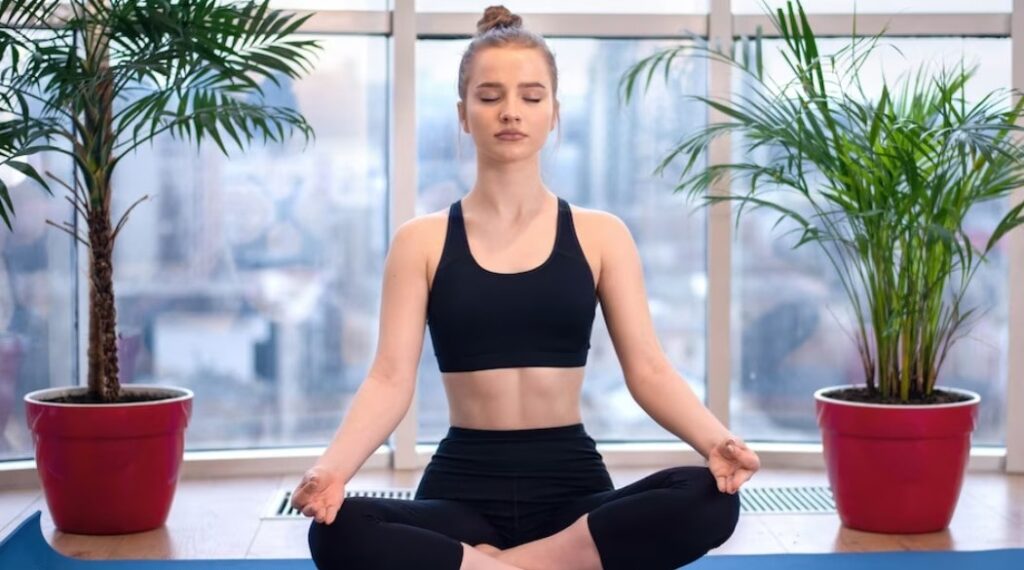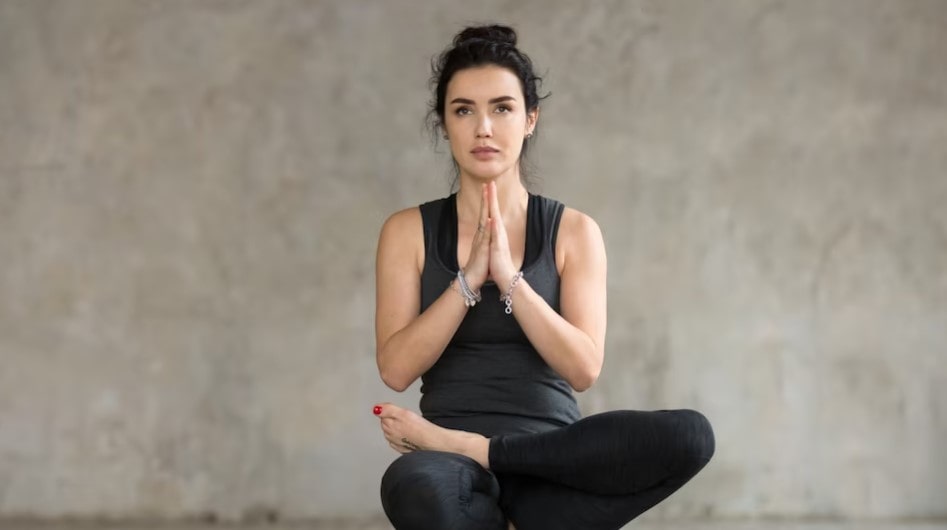Yoga is an ancient practice that promotes physical, mental, and spiritual well-being. It is a holistic approach to achieving balance, flexibility, and inner peace. Whether you are new to yoga or have some experience, this beginner’s guide will help you embark on a rewarding journey toward self-discovery and wellness.
Yoga originated in ancient India and has been practiced for thousands of years. It combines physical postures (asanas), breathing techniques (pranayama), meditation, and ethical principles to create a harmonious union of body, mind, and spirit. The word “yoga” itself means “union” or “connection.” Through regular practice, individuals can achieve a sense of balance, flexibility, and inner peace.
Benefits of Yoga for the Mind and Body

The practice of yoga offers numerous benefits for both the mind and body. It helps improve flexibility, strength, and balance, making it an excellent exercise for people of all fitness levels. Additionally, yoga promotes relaxation, reduces stress and anxiety, and enhances mental clarity and focus.
Regular yoga practice can also improve posture and alignment, relieve chronic pain, increase energy levels, and boost the immune system. It improves circulation and digestion, detoxifies the body, and promotes better sleep. Moreover, yoga cultivates self-awareness and mindfulness, fostering a deeper connection with oneself and others.
Different Types of Yoga Practices

There are various types of yoga practices to suit different needs and preferences. Here are some popular styles:
1. Hatha Yoga
Hatha yoga focuses on physical postures and breath control. It is a gentle practice suitable for beginners and emphasizes alignment, balance, and relaxation.
2. Vinyasa Yoga
Vinyasa yoga, also known as flow yoga, involves seamlessly linking breath with movement. It is a dynamic and fluid practice that builds strength, flexibility, and endurance.
3. Ashtanga Yoga
Ashtanga yoga is a rigorous and structured practice that follows a specific sequence of poses. It focuses on synchronizing breath with movement and develops strength, stamina, and mental discipline.

4. Bikram Yoga
Bikram yoga consists of a series of 26 poses practiced in a heated room. The heat helps increase flexibility and detoxification, while the sequence targets all major muscle groups.
5. Kundalini Yoga
Kundalini yoga combines physical postures, breathwork, chanting, and meditation. It aims to awaken the dormant energy at the base of the spine and promote spiritual growth.
Getting Started with Yoga

If you’re new to yoga, here are some essential steps to help you get started:
1. Finding a Yoga Studio or Instructor
Look for a reputable yoga studio or qualified instructor in your area. Read reviews, ask for recommendations, and ensure they align with your goals and preferences.
2. Choosing the Right Yoga Mat and Props
Invest in a good-quality yoga mat that provides adequate cushioning and grip. Depending on the style of yoga, you may also need props such as blocks, straps, or bolsters to support your practice.
3. Dressing Comfortably for Yoga
Wear comfortable, breathable clothing that allows for unrestricted movement. Opt for flexible and moisture-wicking fabrics to help you stay cool and comfortable during your practice.

4. Setting Realistic Goals
Start with realistic expectations and set achievable goals. Remember that yoga is a journey, and progress takes time. Be patient with yourself and enjoy the process of learning and growing.
Basic Yoga Poses for Beginners
Here are some foundational yoga poses that are suitable for beginners:
1. Mountain Pose (Tadasana)
Stand tall with feet hip-width apart, grounding through the feet. Align your spine, relax your shoulders, and engage your core. This pose promotes stability and improves posture.
2. Downward-Facing Dog (Adho Mukha Svanasana)
Begin on your hands and knees, then lift your hips up and back, forming an inverted V shape. Press your hands into the mat, lengthen your spine, and extend your heels toward the ground. This pose stretches the hamstrings and strengthens the upper body.
3. Child’s Pose (Balasana)
Start on your hands and knees, then bring your hips back towards your heels, resting your forehead on the mat. Extend your arms in front of you or alongside your body, and breathe deeply into your back. This pose promotes relaxation and releases tension in the spine.

4. Warrior I (Virabhadrasana I)
Step one foot forward into a lunge position, with your knee directly above your ankle. Raise your arms overhead, keeping your shoulders relaxed. Engage your core and sink deeper into the lunge. This pose strengthens the legs and improves balance.
5. Tree Pose (Vrksasana)
Shift your weight onto one foot and bring the sole of the other foot to rest on the inner thigh or calf of the standing leg. Find your balance and bring your hands to your heart center or extend them overhead. This pose improves balance and focus.
Breathing Techniques in Yoga
In addition to the physical postures, yoga incorporates various breathing techniques to enhance the practice. Here are a few commonly used breathing techniques:
1. Ujjayi Breath
Ujjayi breath involves constricting the back of the throat slightly to create a soft, whispering sound during both inhalation and exhalation. This deep and audible breath helps calm the mind, regulate body temperature, and increase focus.
2. Nadi Shodhana (Alternate Nostril Breathing)
Nadi Shodhana is a balancing breath that involves gently closing one nostril while inhaling through the other, then switching nostrils while exhaling. This technique promotes relaxation, balances energy channels, and purifies the body.
3. Kapalabhati (Skull Shining Breath)
Kapalabhati is a rapid and forceful exhalation followed by passive inhalation. It helps to cleanse the respiratory system, increase lung capacity, and invigorate the body and mind.
Yoga and Meditation
Meditation is an integral part of the yoga practice. It cultivates mindfulness, awareness, and a sense of inner calm. Here are some ways to incorporate meditation into your yoga practice:
1. Benefits of Meditation
Meditation offers numerous benefits, such as reducing stress, improving focus and concentration, enhancing emotional well-being, and promoting self-discovery and self-awareness.
2. Incorporating Meditation into Your Yoga Practice
After completing the physical postures, find a comfortable seated position. Close your eyes and bring your attention to your breath or a chosen focal point. Allow your thoughts to come and go without judgment, cultivating a sense of presence and inner stillness.
3. Mindfulness and Awareness
During your yoga practice, cultivate mindfulness by bringing your attention to the sensations in your body, the quality of your breath, and the present moment. Stay fully engaged and aware of each movement and breath, allowing yourself to be fully present in the practice.
Yoga for Stress Relief and Relaxation
Yoga is a powerful tool for stress relief and relaxation. Here are some specific practices and poses that can help:
1. Relaxation Poses and Techniques
Poses such as Corpse Pose (Savasana), supported forward folds, and gentle twists can induce relaxation and release tension in the body. Incorporate these poses into your practice to promote deep relaxation and stress relief.
2. Yoga Nidra (Yogic Sleep)
Yoga Nidra is a guided relaxation practice that brings you into a state of deep relaxation while remaining conscious. It helps release physical, mental, and emotional tension, promoting profound rest and rejuvenation. By following the instructions of a teacher or recorded audio, you can experience a state of complete relaxation and inner stillness.
3. Restorative Yoga
Restorative yoga involves gentle and supported poses using props such as bolsters, blankets, and blocks. These poses are held for an extended period, allowing the body to fully relax and restore. Restorative yoga helps activate the parasympathetic nervous system, reducing stress and promoting deep relaxation.
Advanced Yoga Practices
As you progress in your yoga journey, you may explore more advanced practices to challenge yourself further. Here are some options:
1. Challenging Yoga Poses
Advanced yoga poses like inversions, arm balances, and deep backbends require strength, flexibility, and balance. These poses provide physical and mental challenges, helping you develop focus, determination, and resilience.
2. Yoga Sequences for Strength and Flexibility
Engaging in dynamic yoga sequences that combine challenging poses can help improve both strength and flexibility. These sequences often include flowing movements, transitions, and holds to target different muscle groups and increase overall body awareness.
3. Yoga for Balance and Inversions
Practicing balancing poses and inversions like headstands or handstands can enhance proprioception, core strength, and body control. These poses challenge your stability and focus, helping you cultivate a sense of balance in both your physical and mental realms.
Tips for Progressing in Your Yoga Practice
To make progress in your yoga practice, consider the following tips:
1. Consistency and Regular Practice
Consistency is key. Set aside dedicated time for your yoga practice and aim to practice several times a week. Regular practice allows your body and mind to adapt and progress.
2. Listening to Your Body
Pay attention to your body’s signals and honor its limitations. Avoid pushing yourself too hard or forcing yourself into poses that don’t feel right. Respect your body’s boundaries and modify poses as needed.
3. Modifying Poses for Your Level
If you’re a beginner or dealing with specific limitations, feel free to modify poses to suit your needs. Use props, take variations, or choose gentler alternatives to build strength and flexibility gradually.
Conclusion
Yoga is a transformative practice that offers numerous physical, mental, and spiritual benefits. Whether you’re a beginner or an experienced practitioner, the journey of yoga is an ongoing process of self-discovery, growth, and finding balance and flexibility in both body and mind.
By incorporating yoga into your daily life, you can improve your overall well-being, cultivate mindfulness, and enhance your physical strength and flexibility. Remember to listen to your body, practice with intention and consistency, and embrace the journey with patience and self-compassion.
FAQs (Frequently Asked Questions)
Is yoga suitable for everyone?
Yes, yoga is suitable for people of all ages and fitness levels. However, it’s essential to consult with your healthcare provider before starting any new exercise program, especially if you have any pre-existing medical conditions.
How often should I practice yoga?
The frequency of your yoga practice depends on your schedule and personal goals. Aim for at least two to three sessions per week to experience noticeable benefits. Consistency is key.
Can yoga help with weight loss?
While yoga primarily focuses on overall well-being and balance, it can be a valuable component of a weight loss journey. The physical activity involved in yoga, combined with mindful eating habits, can support weight management.
What do I need to bring to a yoga class?
It’s recommended to bring your own yoga mat, comfortable clothing, a water bottle, and a towel. Some studios provide props like blocks and straps, but you can also bring your own if desired.
Can I practice yoga at home?
Absolutely! Practicing yoga at home is a convenient and accessible way to incorporate it into your routine. There are many online resources, videos, and apps available that can guide you through home yoga practice.


